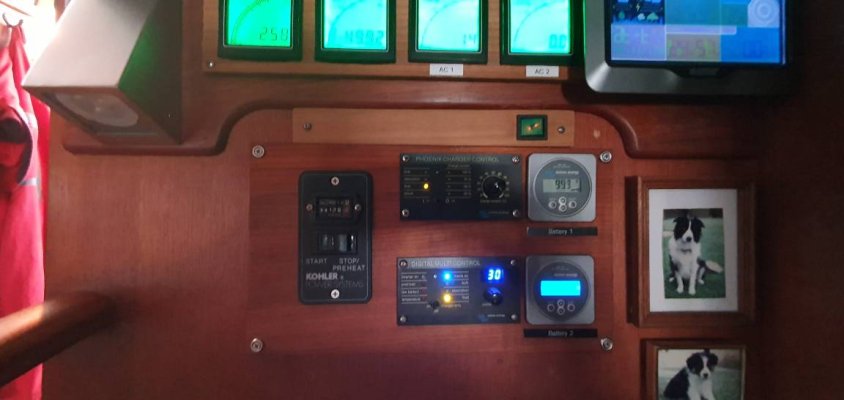So, we recently bought a nordic tug that has, what seems to me, a weird house bank arrangement. I am looking for opinions on the pros/cons of this type arrangement. What we have is this;
House bank 1: 300AH, serves solely the DC loads
House bank 2: 600AH, dedicated solely to the inverter and thus AC loads
There are also dedicated engine and genset starter batteries, so those are isolated and independent of the house banks.
My boating background is on sailboats and I never had more than one house bank that served both DC and AC loads. On this nordic, we find that typically we put a heavy load on house bank 1 and we run very few things that use house bank 2 very much. Seems like a waste to me to have 2/3 of my capacity little used, so I am considering rewiring to be a single 900AH house bank serving both AC and DC loads.
I am looking for pros/cons on this 1 bank versus 2 bank arrangement. Any thoughts on this? With my background, I really do not see the pros on why someone would set up two independent house banks this way. But my experience is limited...
Thoughts?
Scott
House bank 1: 300AH, serves solely the DC loads
House bank 2: 600AH, dedicated solely to the inverter and thus AC loads
There are also dedicated engine and genset starter batteries, so those are isolated and independent of the house banks.
My boating background is on sailboats and I never had more than one house bank that served both DC and AC loads. On this nordic, we find that typically we put a heavy load on house bank 1 and we run very few things that use house bank 2 very much. Seems like a waste to me to have 2/3 of my capacity little used, so I am considering rewiring to be a single 900AH house bank serving both AC and DC loads.
I am looking for pros/cons on this 1 bank versus 2 bank arrangement. Any thoughts on this? With my background, I really do not see the pros on why someone would set up two independent house banks this way. But my experience is limited...
Thoughts?
Scott

